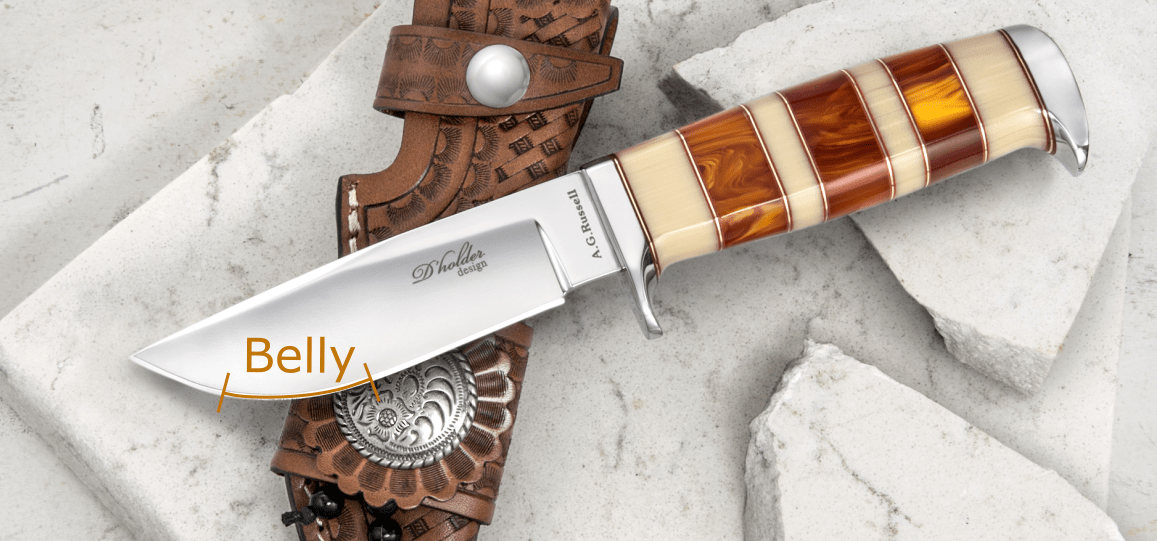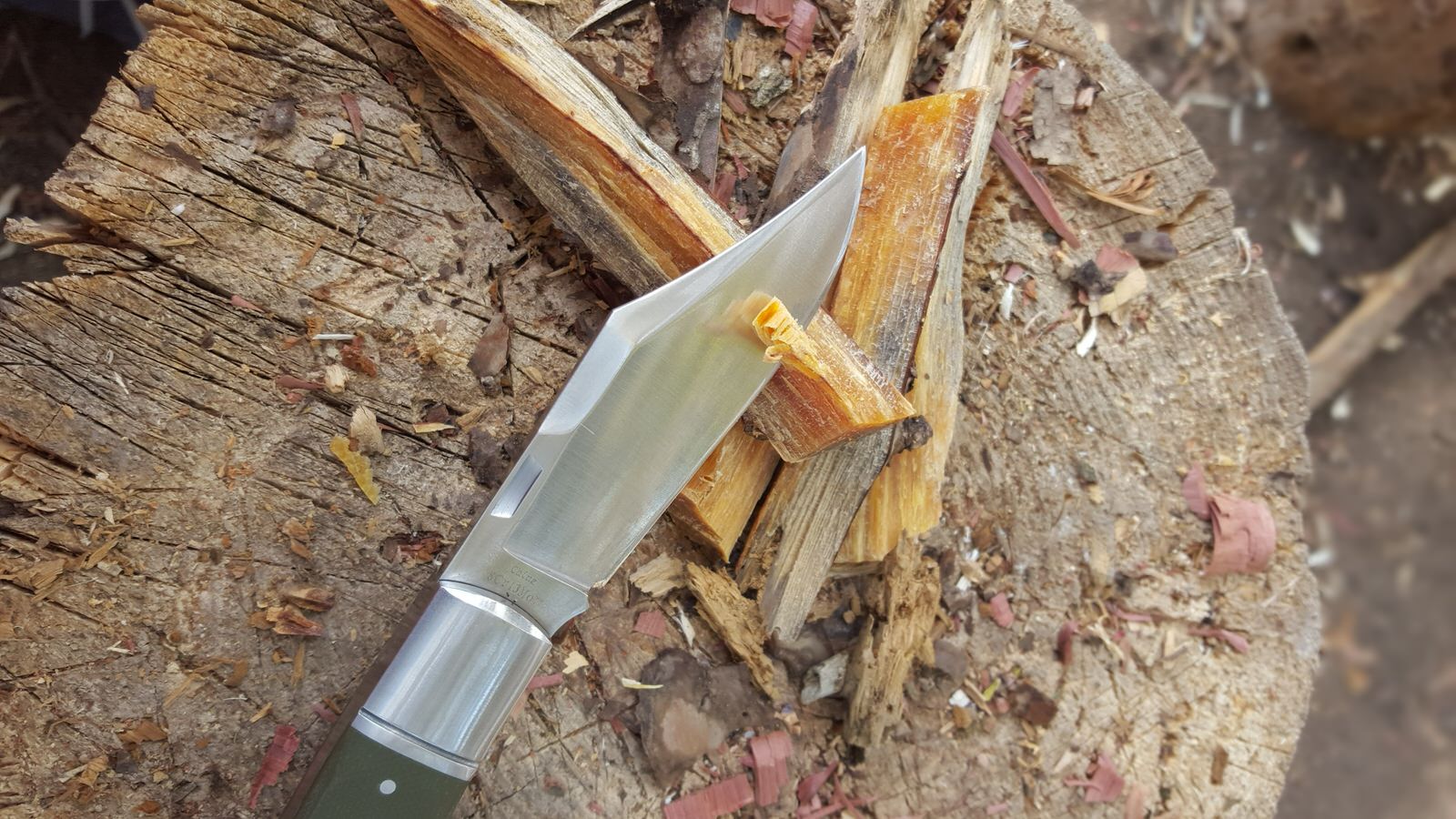Blade Facing & Belly - Knife Characteristics I
Blade Facing & Belly is the first in my series, Knife Characteristics. If you are new to knives and want to learn more these articles will be an excellent guide. They will also be instructive in your decision for which knife features you want for particular tasks.
Blade Facing
The Obverse side of a blade is the front side. The point is on the left side, with the edge facing down. The Reverse is the opposite side of the knife. The D’Holder style knife pictured below is in the Obverse position (the front side). As you can see, makers often put their mark or logo on this side of the blade. Blades are usually photographed showing the obverse side.
The Belly
The belly of a blade is the curving part of the blade edge. See the circled area on the picture. Some knives do not have a belly, such as a dagger. Others are almost all curve, such as a skinner. A “big-bellied” knife has a lot of belly, or a large area of curving edge. When you are slicing material with a curving edge, the angle of the edge is constantly changing. This constantly changing angle improves the efficiency of slicing. The more belly a knife has, the better it will perform at tasks like slicing and slashing. If slicing is important to you, then you want a blade with a nicely curving belly. Most skinning knives will have a lot of belly because their main task is slicing.
There is a tradeoff for having a big belly. To create a big belly, the point of your knife is forced farther up on the blade. This will reduce the knife’s ability to pierce. Imagine drawing a line from the middle of the handle, straight out along the blade. As a general rule of thumb, closer the point of the blade is to this middle line, the better the knife will pierce.
There are exceptions and workarounds to this rule, but it gives you an idea of what to look for when you are looking for a slicing or piercing blade.
Big Belly
A knife with plenty of belly is the Ti-Fist Tactical Folder. It has an excellent curving belly and is extremely efficient at slicing. The point of the blade hovers towards the top of the handle, rather than being closer to that imaginary middle line. So the Ti-Fist will be excellent at slicing, but will not pierce as well as a knife with a centered point.
Little to No Belly
A knife with very little belly is the Benchmade Fixed Infidel. This knife will be excellent at peircing. See how the point lines up perfectly with the imaginary line from the center of the handle? But the Infidel would not make for a very good slicer. It has little to no belly, so the edge will not present the material being cut with a changing angle as much as a blade with more belly would. If I were to hang up a piece of meat and slash it with the Infidel, it would cut the meat. But if I were to then slash it with the Ti-Fist, it would cut much deeper. In reverse, if we were testing piercing, the Pentagon would take much less energy and effort to pierce something than the Ti-Fist would. The Infidel's thinner profile would also be less likely to snag on anything while piercing.
So you trade belly (slicing) for a point (piercing).
Trade Off
There are a few tricks to achieve a modicum of both. For example, the designer can take a blade with lots of belly for slicing, and take off part of the top of the spine near the edge, and grind it with a bevel. This creates what is called a Clip Point blade. This bevel is called a False Edge (it looks like an edge but isn’t sharp). This brings the point down a little closer to that invisible middle line, and thins the metal at the spine, allowing for better piercing. Take for example the Arkansas Hunter below.
The clip point blade has belly, and the tip is closer to the invisible middle line. The belly on this knife isn’t as pronounced as the Ti-Fist, nor is the tip as centered as on the Pentagon. However, it has a little of each, making it a great all around knife - capable of many tasks. Some folks prefer knives designed specifically for what they intend to do, and some prefer knives that can do a variety of tasks. There is merit in both approaches.
Thanks for Reading!
Click on the button below to read the next article, where I talked about the benefits of Recurved Blades.


.jpg)
.jpg)
